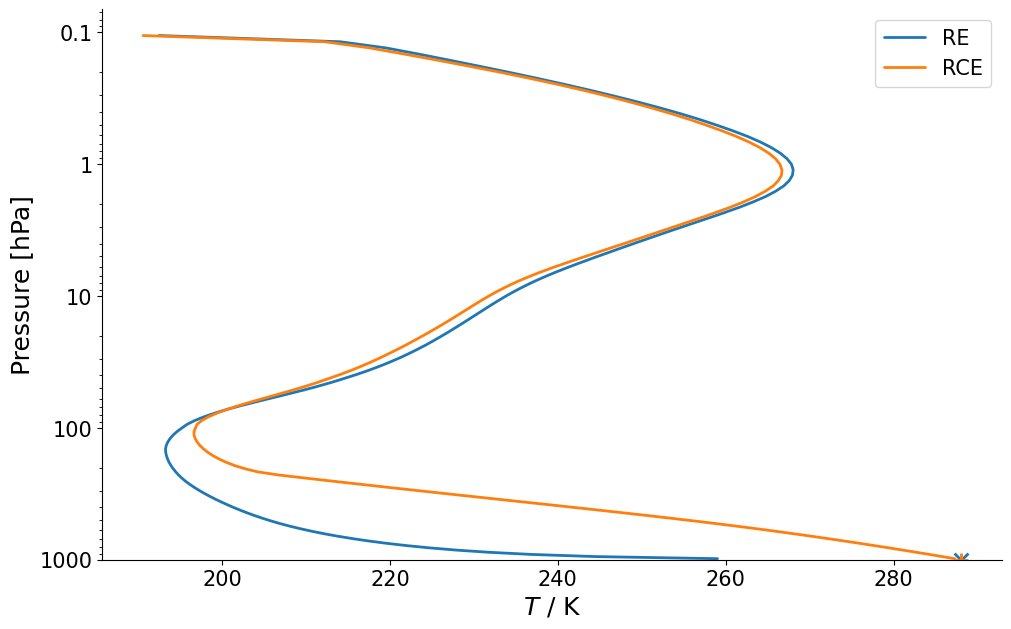Convection#
import matplotlib.pyplot as plt
import numpy as np
from typhon import plots
import konrad
plots.styles.use()
In its default configuration, konrad simulates a radiative-convective equilibrium state. However, it is possible to turn off the convective adjustment.
Radiative equilibrium (RE)#
In a first step, we equilibrate our model to a pure radiative equilibrium. In this configuration no other tendencies besides the radiative cooling are present - in particulr no convection.
phlev = konrad.utils.get_quadratic_pgrid(1000e2, 10, 128)
atmosphere = konrad.atmosphere.Atmosphere(phlev)
atmosphere["CO2"][:] = 348e-6 # Set reference CO2 concentration
re = konrad.RCE(
atmosphere,
convection=konrad.convection.NonConvective(),
timestep='24h',
max_duration='150d',
)
re.run()
Radiative-convective equilibrium (RCE)#
In a second step, we enable the convective adjustment. We copy the existing atmosphere component to create to individual components that we can later compare.
rce = konrad.RCE(
atmosphere,
convection=konrad.convection.HardAdjustment(),
timestep='24h',
max_duration='150d',
)
rce.run()
Compare RE and RCE#
Finally, we can compare the thermal structure in radiative equilibrium (RE) and radiative-convective equilibrium (RCE). Without convection the temperature lapse-rate in the troposphere is increase significantly. This leads to a much cooler tropopsphere despite the same surface temperature (see markers at the bottom).
In the stratosphere, however, both model configurations are in a pure radiative equilbrium, which is why they barely differ.
fig, ax = plt.subplots()
# Plot radiative equilibrium (RE)
l, = plots.profile_p_log(re.atmosphere["plev"], re.atmosphere["T"][-1], label="RE")
ax.scatter(re.surface["temperature"][-1], re.surface.pressure, marker="x", color=l.get_color())
# Plot radiative-convective equilibrium (RCE)
l, = plots.profile_p_log(rce.atmosphere["plev"], rce.atmosphere["T"][-1], label="RCE")
ax.scatter(rce.surface["temperature"][-1], rce.surface.pressure, marker="+", color=l.get_color())
ax.legend()
ax.set_xlabel(r"$T$ / K")
ax.set_ylim(bottom=re.surface.pressure)
(np.float64(100000.00000000009), np.float64(6.679409185473571))

